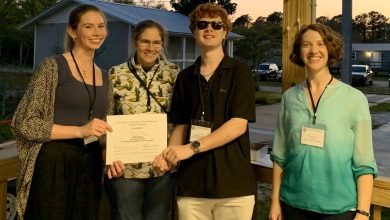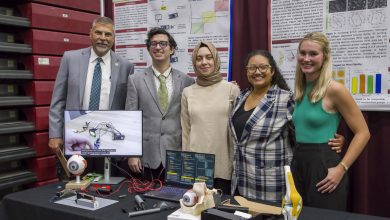The Thought Experiment
The other day in my physics class, our professor discussed Newton’s second law, where force equals the mass of an object multiplied by the acceleration of gravity (F = ma). When dealing with a falling object, the equation can be re-written as F =mg, where g is the force of gravity. One of the most important things to understand about this statement is time has nothing to do with it. Therefore, theoretically, if two objects are dropped from the same height, both objects will hit the ground at the same time, no matter if one is heavier than the other (gravity accelerates them the same way).
Galileo Galilei proposed this idea in the late 1500s, directly opposing Aristotle’s widely accepted theory that objects fall relative to their mass, meaning a heavier object would hit the ground first. To prove his point, Galileo came up with his famous “thought experiment” involving the leaning Tower of Pisa. He said if he were to take a cannon ball and a musket ball up the tower and drop both from the top, they would reach the ground at the exact same time. He declared the same result would be found no matter what two objects were dropped (assuming air resistance does not affect either of the objects).
What better way to test Galileo’s thought experiment than to test it in the ultimate airless environment—space! Dave Scott, Mission Commander of Apollo 15, did just that. Not only does the moon solve the air resistance problem, but it also allows us to test the theory with a completely different gravity (the moon’s gravity is about one-sixth of Earth’s). In theory, a hammer and a feather dropped on the moon should hit the surface at the same time . . . watch this video below to find out if Galileo was correct.
But hold up! The hammer and feather was just one tiny experiment; what else happened on Apollo 15?
Apollo 15 was first of the “J missions” to the moon. Unlike earlier missions, the astronauts now had three days to collect samples and perform experiments while on the surface of the moon, instead of two like Apollo 12 and 14. It was also the first mission to have the newly made Lunar Rover. Astronauts Dave Scott and James Irwin made their moonwalks (called “Extra-Vehicular Activities” or “EVAs”) stretch to about 100 kilometers using the rover, as opposed to the walks the previous missions’ astronauts had to do. Apollo 15 was also the mission where the Genesis Rock was found. The earlier missions brought back loads of volcanic rocks, but James Irwin found a piece of anorthosite (rock from the crust of the early moon) while exploring Spur Crater. The rock helped scientists get a look into the moon’s early life, and Scott’s drill-core sample (with over fifty distinct layers!) helped us piece together the moon’s history. Overall, the mission was considered a huge success.**
Traveling to space has been man’s ultimate voyage. Space is the final frontier, and we have the privilege of living in the era when it has been reached. Yes, the Apollo missions are behind us, and so are the Shuttle missions, but in order to move toward the future, we need to understand the past and the way our universe works. Who knows where our next mission will be? Only time will tell . . .
*photo credit: <a href=”http://www.flickr.com/photos/viamoi/3103921484/”>ViaMoi</a> via <a href=”http://photopin.com”>photo pin</a> <a href=”http://creativecommons.org/licenses/by-nc-nd/2.0/”>cc</a>
** Credit to Missions to the Moon: The Complete Story of Man’s Greatest Adventure by Rod Pyle.





